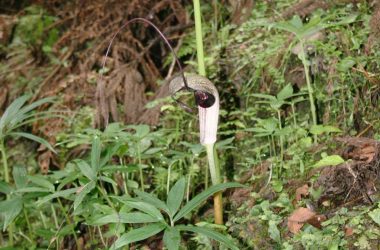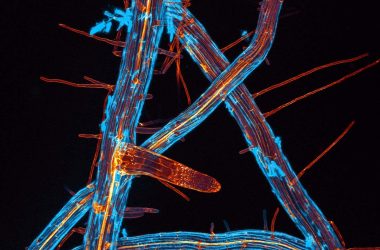Artist’s impression of the ancient jellyfish Burgessomedusa phasmiformis
Christian McCall
A fossil found in Canada has provided the oldest record of a preserved adult jellyfish, dating back over 500 million years.
During the 1980s and 1990s, researchers discovered remarkably preserved remains of various marine creatures, including jellyfish, in the Burgess Shale, a deposit of fossils in the Canadian Rockies.
Known for its exceptional preservation quality, the Burgess Shale has even yielded specimens with intact stomachs, eyes, and sometimes even the last meal consumed by these animals, as noted by Joe Moysiuk from the University of Toronto in Canada.
However, most of these fossils have remained untouched since their excavation and are currently housed in the Royal Ontario Museum in Toronto.
Slab showing two preserved Burgessomedusa phasmiformis jellyfish, one large and the other small and upside down
Jean-Bernard Caron/Royal Ontario Museum
Within this collection, Moysiuk and his colleagues identified the earliest evidence of an adult jellyfish. They named this new species Burgessomedusa phasmiformis, referring to its ghost-like appearance, reminiscent of the character in the video game Pac-Man.
The ancient jellyfish closely resembles its modern counterparts, measuring 20 centimetres in length, with a bell-shaped body and over 90 tentacles surrounding its edges. This specimen was trapped in underwater mud flow around 500 million years ago and rapidly buried.
Jellyfish have a complex life cycle, transitioning between two distinct forms: polyps and medusas. During the polyp stage, which marks the initial phase of a jellyfish’s life, they reside on the seafloor and reproduce asexually. Eventually, they mature into medusas, which can freely swim and mate with other jellyfish.
Previous excavations have uncovered polyp fossils dating back 560 million years. However, this recent discovery provides the first definitive evidence of a large swimming jellyfish during this period, indicating that jellyfish had already established this life cycle at least half a billion years ago.
Topics:








